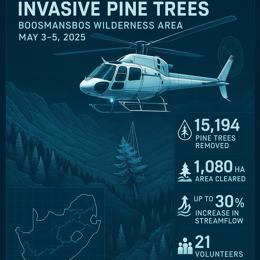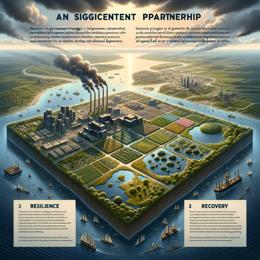Image created by AI
Cape Town’s Canopy Crisis: Battling Urban Heat with Tree Cover
Cape Town is facing an alarming decline in its tree population, exacerbating the Urban Heat Island effect and putting the health of its citizens at risk. With global warming already a stark reality as temperatures soar due to the burning of fossil fuels and deforestation, the Mother City's scant 6% tree canopy cover falls significantly short of combating these heat intensities—posing a severe threat reminiscent of the 2003 European heatwave that claimed over 70,000 lives.
The Council for Scientific and Industrial Research (CSIR) and security experts have warned of cities becoming heat traps, affecting the well-being of residents, particularly those most vulnerable. A recent study by Heat Watch Cape Town uncovered temperature disparities of up to 16.3°C across the cityscape. Heavily treed areas offer some reprieve, but many regions, especially low-income neighborhoods like Khayelitsha, Mitchells Plain, and Dunoon, experience severe tree scarcity.
Trees have been identified as an economical tool to lower heat, improve air quality, and reduce flooding. The United Nations Economic Commission for Europe endorses a minimum 30% tree cover in urban habitats for ecological and psychological benefits, promoting their “3-30-300” urban greening principle. Contrastingly, Cape Town’s tree canopy is at a measly 6%, with a target to achieve a 10% cover.
However, the stark reality is that tree losses due to pests like the Polyphagous Shot Hole Borer, extreme weather events, and the expansion of solar panel installations due to loadshedding prevail over the number of trees being planted. According to the City's mayco member Patricia van der Ross, replanting falls short, considering a 70% survival rate, with the figure for trees that may thrive in 2023/24 just around 1,500.
With the urbanisation of Cape Town, native trees that thrive in cool, moist soils of the mountainous areas are unsuitable for the sandy, windy conditions of the expansive Cape Flats. Advocates like Nicky Schmidt of Parkscapes contend the use of non-invasive alien species as a transitional phase before natives can be reintroduced to the altered ecosystem.
Additionally, the approach towards urban forestry has been evolving. “Pocket forests” based on Professor Akira Miyawaki’s methodology that drive natural forestation through dense, balanced planting have seen favorable outcomes in areas of the Cape Flats. The City's Urban Forest Policy of 2023 supports the strategic incorporation of suitable exotic species, while focussing on the well-being of the community.
Addressing this critical issue requires a holistic effort, blending urban development with environmental sustainability to secure a healthier, cooler future for all of Cape Town's residents.










